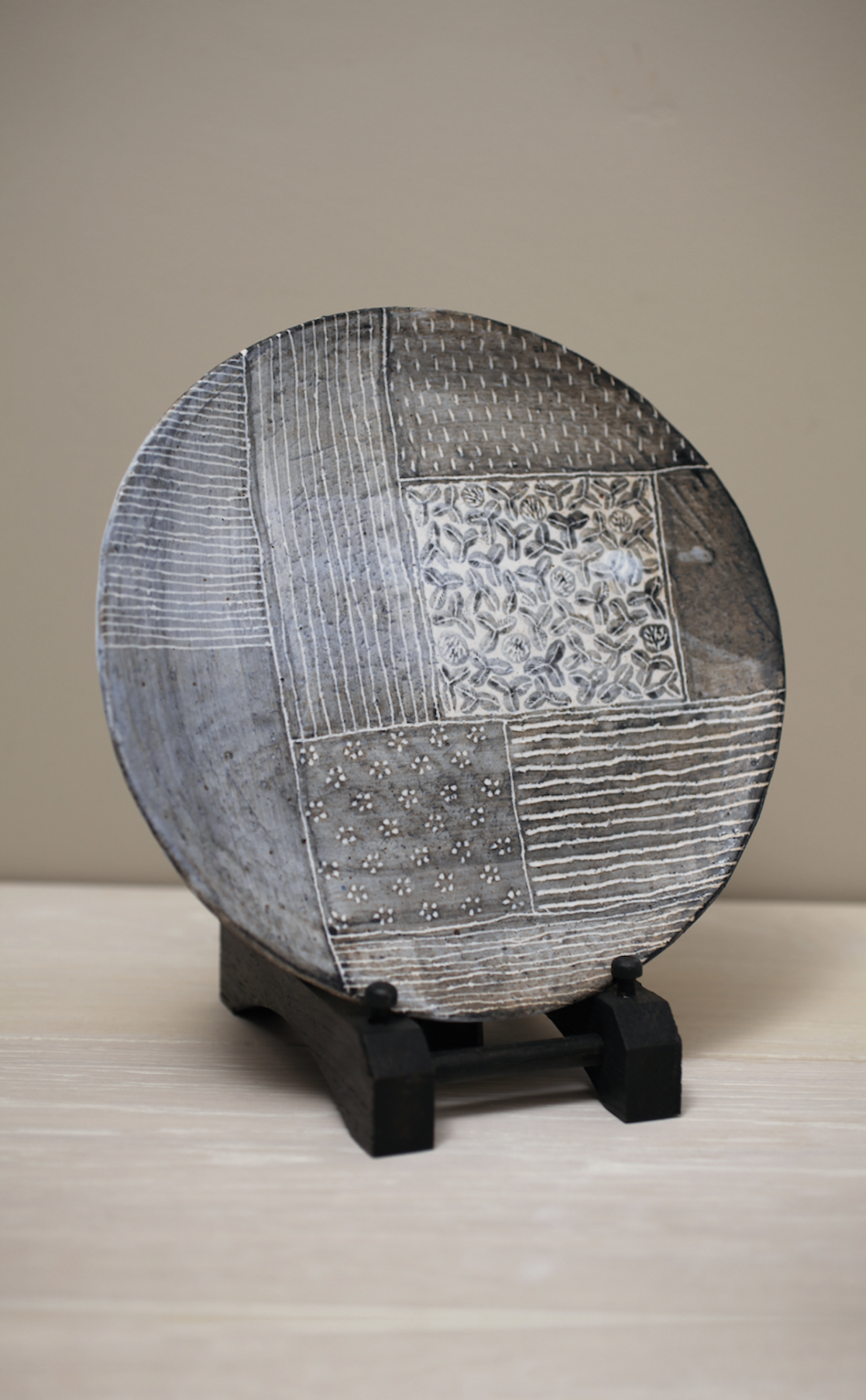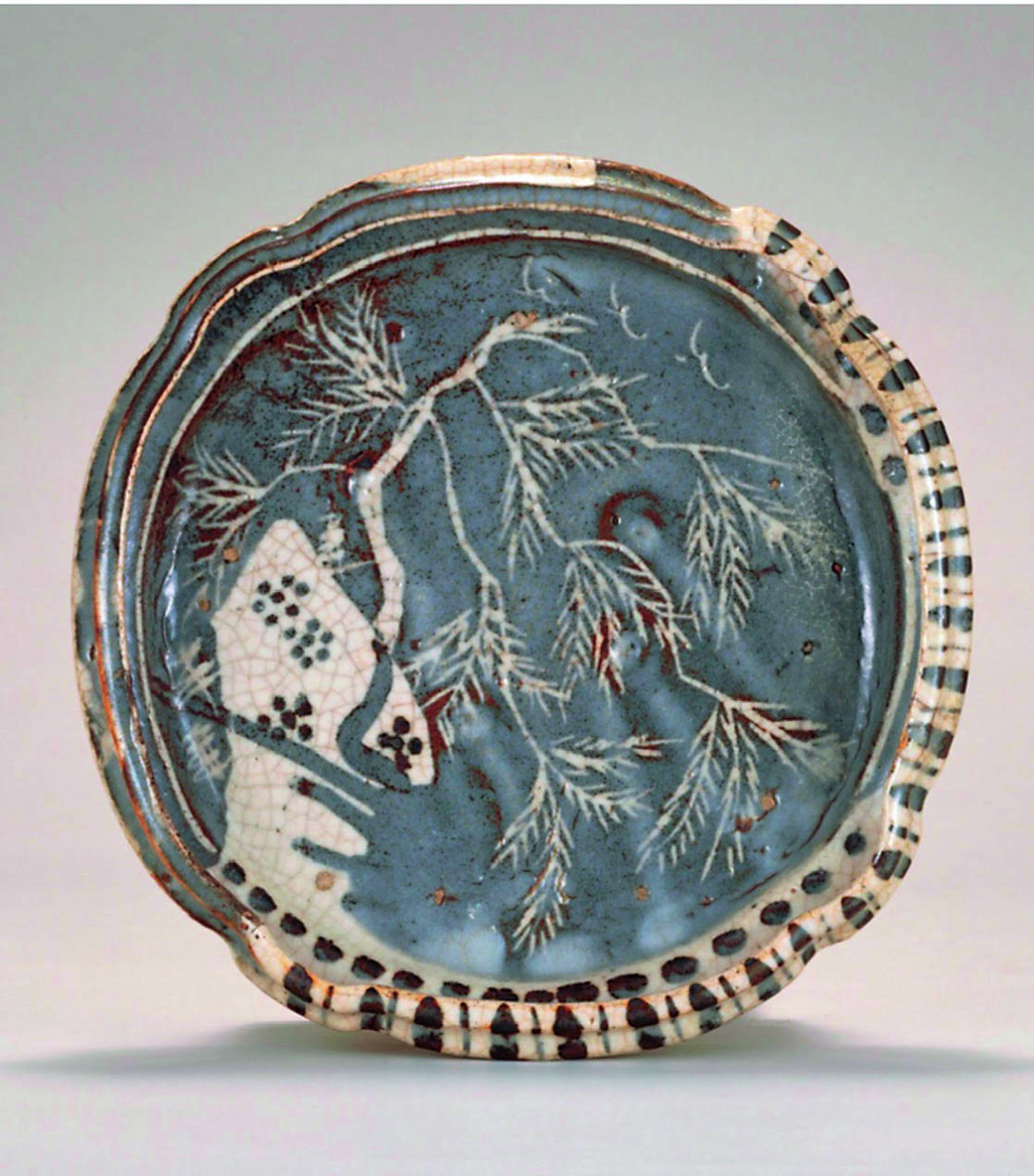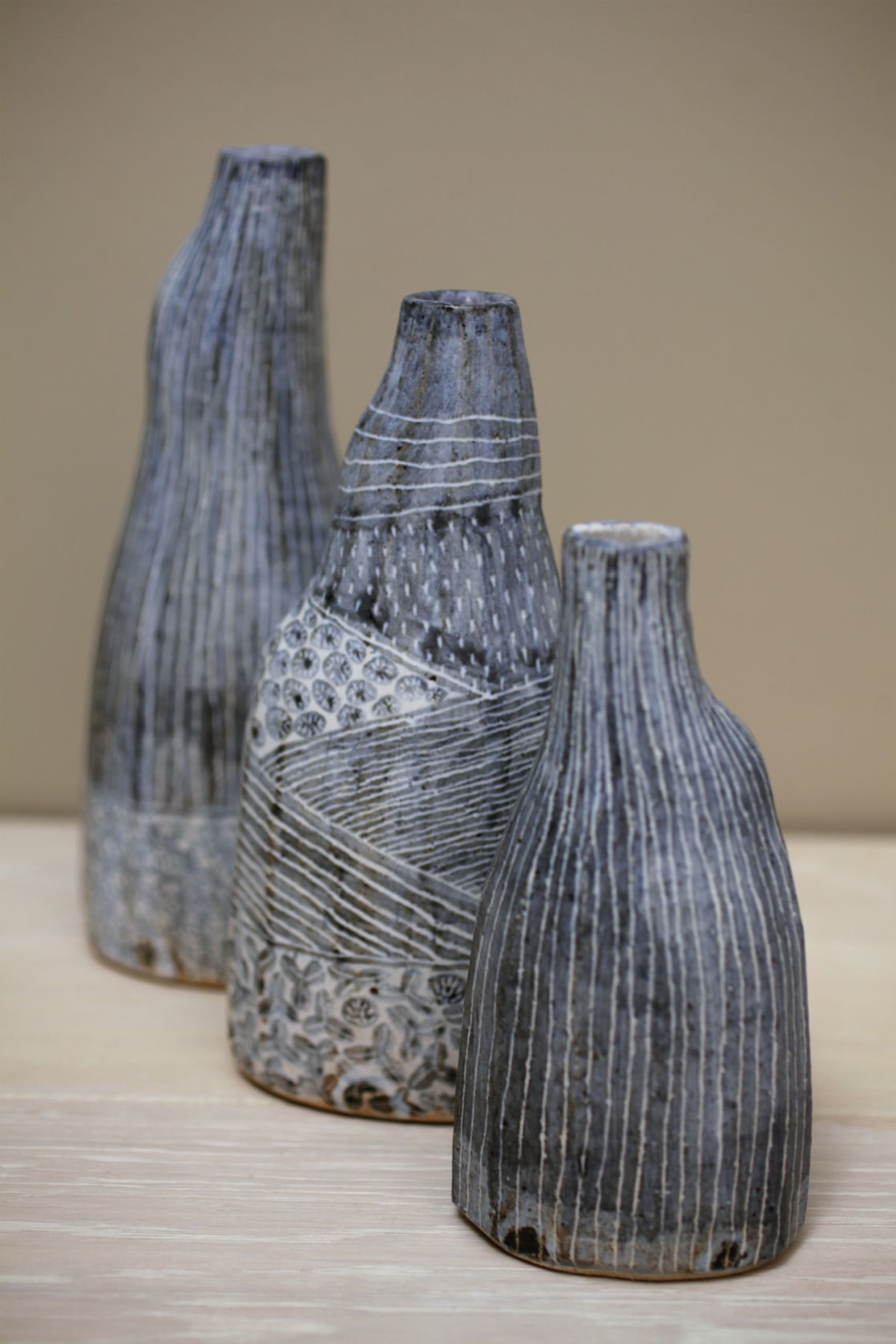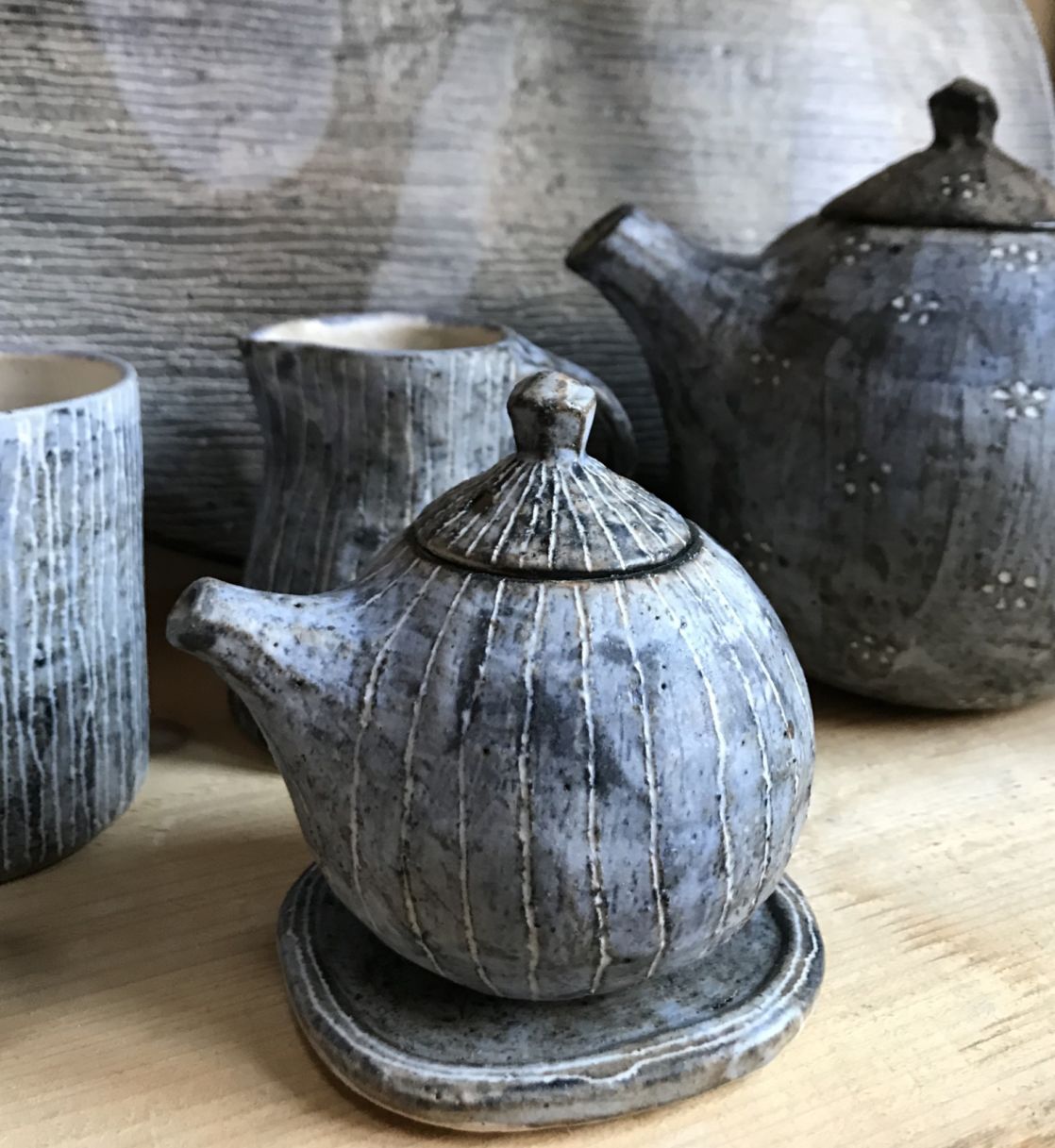Welcome to Ceramic Review
Ceramic Review is the magazine for contemporary and historical ceramics, ceramic art and pottery.
Ceramic Review Issue 330
November/December 2024
Ceramic Review is the magazine for contemporary and historical ceramics, ceramic art and pottery.
November/December 2024
Yo Thom is a Japanese potter who started her ceramics career after moving to the UK to study art and design. Here she explains how looking back at historic Nezumi Shino pottery from her own culture inspires what she creates today

Work by Yo Thom; courtesy of the artist
My first experience with clay was with my mother back home in Japan. She was taking pottery classes run by my primary school art teacher and used to make tableware and sculptures on our dining table. My sisters and I used to join in and make animals and simple vessels. To this day I can remember the excitement when my pieces came back from being glaze-fired – I felt so proud.
After graduating from university in Japan with an English Language degree, I decided to come to the UK to study art and design. I didn’t have any background
in art prior to that, but I knew I liked working with three-dimensional materials rather than two-dimensional. I entered the Three-dimensional Design Course at Kent Institute of Art and Design and majored in Ceramics. While I was still at the Institute, I also started to work for Lisa Hammond MBE at Maze Hill Pottery, which is where I learnt most of the practical pottery skills and techniques for making functional tableware, all while the college was moving towards more conceptual education.
These days I mainly make functional tableware and some ornamental vessels from stoneware. I decorate the surfaces using indigo slip with sgraffito decoration and a white glaze over the top. I find functional vessels are equally as creative as sculpture, especially in Japan. Japanese tableware is very free in terms of form, styles and materials. To create a poetic space in a vessel that holds objects such as food, demonstrates the maker’s creativity. I think this is just as conceptual and exciting as creating a sculpture or installation. It is fun to be creative within these limits. Giving functionality to my creations is my most comfortable way of expressing myself through clay.
A key ceramics tradition that has inspired me is Nezumi Shino from the Mino area in Japan. This is a style of pottery developed during the Momoyama era (16–17th century) and is often referred to as ‘grey shino’. A great example of this type of work is a flat bowl held in the collection of the Suntory Museum of Art, a museum in Tokyo that holds a collection of 3,000 paintings, ceramics, textiles, glassware and lots more, all centred on Japanese art and the theme of ‘Art in Life’. This piece shows just what I love about Nezumi Shino: the free-spirited forms and decorations. It is very decorative, yet the grey tone and the gentle flow of the decoration would not be intrusive when food is placed on it.
Before the Momoyama era, Japanese pottery sometimes imitated other Asian ceramics, such as Chinese and Korean. However, the rise of tea ceremony culture encouraged makers to be bolder, original and in some cases very abstract. The most famous Shino is mainly white or orange and has a very naturalistic look with a thick frosty glaze and bright orange flashing. However, Nezumi Shino is overall grey in tone and tends to be more decorative in a playful way, sometimes very bold and abstract. Both Aka (red) Shino and Nezumi Shino are created in the same way, using iron rich slip with a white Shino glaze on top. Depending on the firing conditions, reduced Shino turns more orange, while oxidised (or neutral) Shino becomes more grey. To decorate Nezumi Shino, the iron-rich local slip was applied all over the pot and then decorated by scraping and scratching the slipped surface, feldspar glaze was then applied to create the contrast of white marks on the grey background.

Nezumi Shino flat bowl with willow tree design, Momoyama period, 16-17th century; Copyright Suntory Museum of Art, Tokyo, Japan

Work by Yo Thom; courtesy of the artist
I learnt more about Momoyama-era Oribe and Shino ware when I was interpreting for Ken Matsuzaki’s workshop at Margaret and David Frith’s pottery in 2005. I was aware of these styles as they are famous historical pottery in Japan, however, I had very little in-depth knowledge of them. Because I started my ceramics education in the UK, meeting with Ken Matsuzaki was my first encounter with another Japanese potter who was actually working with traditional Japanese pottery techniques. He talked to me passionately about Momoyama pots and I found the era’s arts and crafts very exciting as it was such a revolution at the time and helped to make Japanese pottery what it is today.
I think my personal connection with Nezumi Shino comes with the experience of meeting Ken Matsuzaki, which helped me find my own voice as a Japanese potter living in the UK. When I was living in Japan, I was always looking outside of the country, dreaming of throwing myself into a different culture. Like a lot of young people, I didn’t give great attention to traditions, but when I came to the UK, I inevitably had to look back into my own culture to try to understand why other people find it so fascinating. Looking at it from a different perspective made me realise that Japan has a lot more to offer than I thought and I became proud to be a part of that culture and tradition. Having an opportunity to meet a Japanese potter and discuss our own culture together made me realise that I truly understand my culture, not just as knowledge but also emotionally and conceptually.
While I was developing my own style, I experimented with combinations of slips and glazes to try to capture the same feeling of Nezumi Shino but without copying traditional glazes. I now follow the same decorating technique, but with different ingredients and firing. I am always trying to create my own voice and identity, in the same way as the Momoyama potters did. We have both tried to capture our everyday life in our work; the nature that surrounds us, the beauty that moves us. I am not trying to replicate Japanese pottery, instead my work is a reflection of being proud to be Japanese, while trying to portray my own unique world that unites two different cultures. I have now been in the UK for half my life and I want to introduce in my work my appreciation of the beautiful Dorset countryside where I live and being surrounded by wonderful ‘Englishness’, which I love. These two worlds may seem very different in many people’s eyes, but to me, they are both my home.
You can find Yo Thom’s work at Contemporary Ceramics, London; contemporaryceramics.uk and in the Victoria and Albert Museum shop until 21 June; vam.ac.uk

Work by Yo Thom; courtesy of the artist